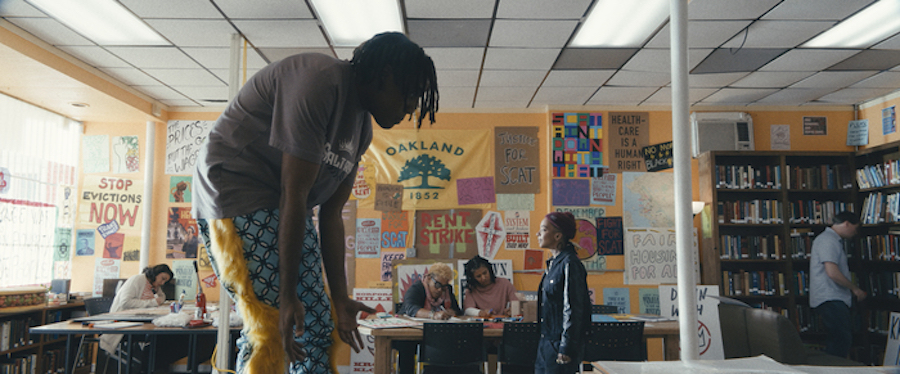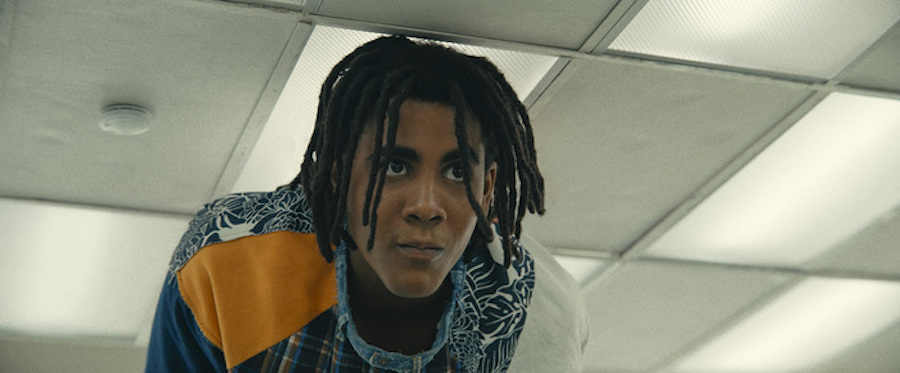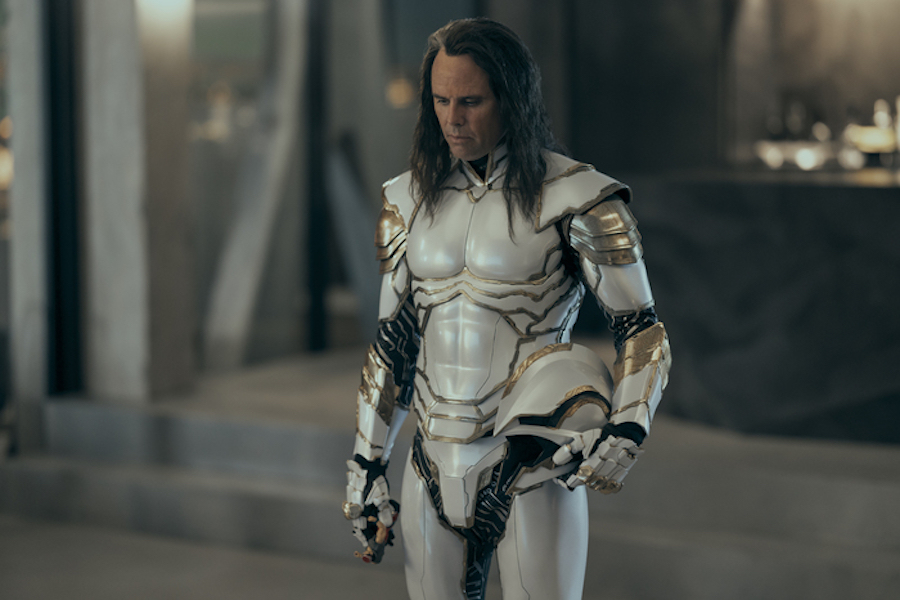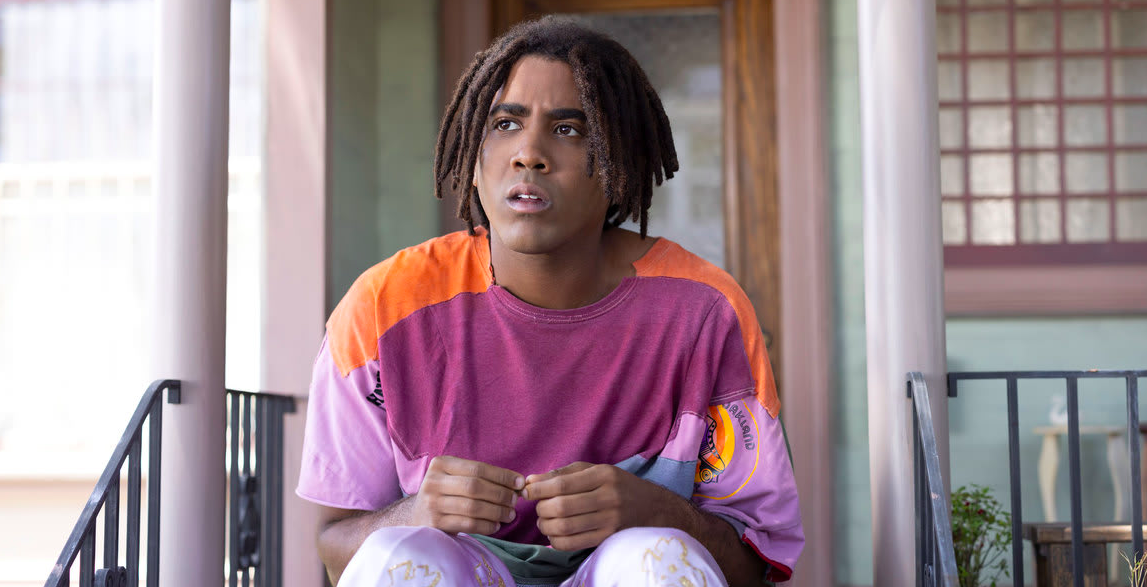Prime Video’s ‘I’m A Virgo’ is an absurdist comedy series that follows the story of a 13ft tall man. Due to his unnatural height, Cootie grows up isolated from the world. His parents want to keep him a secret for as long as they can because they know how easily the world can turn on someone who looks like Cootie. They succeed at the job for nineteen years. Then, Cootie decides to venture out and experience the world for himself. At first, he enjoys this freedom, but things soon turn sour as everything pans out exactly as his parents feared.
Created by Boots Riley, the show is weird on the surface but touches upon social and political issues through its captivating story. Things only get more bizarre with every episode, but the themes also hit deeper and make the audience ponder upon various subjects. Because the story involves people with superpowers, you might wonder if ‘I’m A Virgo’ is inspired by a comic book. Here’s what you should know about it. SPOILERS AHEAD
I’m A Virgo: An Original Story, Not a Comic Adaptation

‘I’m A Virgo’ is an original story written by Boots Riley, who is known for making the cult-hit absurdist comedy film, ‘Sorry to Bother You.’ The reason why ‘I’m A Virgo’ gives the impression of a comic book story can be attributed to Riley’s love for stories about superheroes. “I was definitely obsessed with comic books as a kid. That was actually one of the motivations for getting jobs early. I was doing gymnastics. I was taking martial arts. I was throwing ninja stars and had all the books about them. I was practicing how to sneak into a room without people hearing me, like Batman. To me, this was a real thing you could do,” he said.
The idea for ‘I’m A Virgo’ stemmed from Riley’s interest in contractions and how they speak different things about the same thing. He explained: “I’m attracted to large contradictions. There’s this setup, which hopefully is good and says something in and of itself. But then there’s this other line that comes in that maybe feels ironic, right? Like a contradiction, you weren’t expecting. It surprises. It points out something.” Digging deeper into this idea, Riley thought about creating a story about a 13ft tall Black man in Oakland. (For reference, the tallest person in recorded history is Robert Wadlow, who was about 8ft 11 inches.)

This was an excellent context to examine how contradictions work. It came down to the difference of perspective between how the world treats you and what you think about yourself. “When you see a 13-foot-tall Black man named Cootie walking down the street, the last thing you’re thinking about is how he feels about himself. It’s all about what you want to believe and project. It leads to so many things, but specifically toward race. In this case, the title speaks to that—nobody cares. His astrological sign is the last thing on someone’s mind,” the writer-director said, explaining the relevance of the show’s title.
While crafting the characters in the show, Riley looked towards the people he’d met and know. For Cootie, who grows up in isolation, everything is a discovery. He is enchanted when he finds out about bass and considers it a disservice to his parents for not introducing him to that sooner. This aspect of his character came from one of Riley’s ex-girlfriends who had grown up in a cult and never heard music. She required an explanation for everything as if she came from a different world. The same happens for Cootie.
For Jay Whittle, aka The Hero, Riley didn’t want someone who would be seen as a bad person because he was doing the wrong things. He wanted the Hero to believe he was in the right because he was following the law and preserving the system, which he doesn’t realize is built on exploitation. This is also where the theme of capitalism plays into the story. “So much of what we do is always going to be shaped by how we live, and how we live has to do with whatever economic structure we’re in. Right now, we’re under capitalism. The contradictions of capitalism—how it works—are going to echo through almost everything we do,” Riley added.

In the same vein, he created the character of Jones, a young activist who is looking at the bigger picture, inspired by the people he got to know during his work as a volunteer at the age of 14. “I signed up to be part of this summer project that was helping out farmworkers who were trying to organize an anti-racist farmworkers union in the Central Valley. These were radical organizers. They weren’t just talking about labor struggles. They had a plan. The idea was first, we organize this valley and get this method of organizing popular, then we use that as a way to help create a revolutionary movement,” he added.
For a show brimming with such themes, Riley didn’t make ‘I’m A Virgo’ just to enlighten people. “I think most of us feel like we know what is wrong. But most of the time, the question is, can it be changed? Is there anything you can do about it? But really, my art can only go so far even with that approach,” he said, hoping that people have the tools to bring about that change. Considering all this, it’s clear that despite being a fictional story, ‘I’m A Virgo’ lingers close to reality to give the audience something they can reflect upon after they are done watching it.
Read More: Where is I’m a Virgo Filmed?


You must be logged in to post a comment.